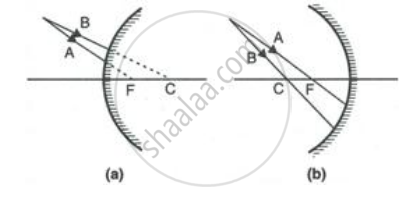Advertisements
Advertisements
प्रश्न
A 4 cm tall object is placed on the principal axis of a convex lens. The distance of the object from the optical centre of the lens is 12 cm and its sharp image is formed at a distance of 24 cm from it on a screen on the other side of the lens. If the object is now moved a little away from the lens, in which way (towards the lens or away from the lens) will he have to move the screen to get a sharp image of the object on it again? How will the magnification of the image be affected?
उत्तर
Given that
Object distance, u = −12 cm
Image distance, v = 24 cm
`1/"f"=1/"v"-1/"u"`
`1/"f"=1/24-1/((-12))`
`1/"f"=1/8`
`therefore"f"=8cm`
The focal length of the lens is 8 cm.
Now if the object is moved away from the lens, the screen has to be moved towards the lens. This is because when we move the object away from the lens, the object distance is increased. Hence, by the lens formula, the image distance decreases.
Magnification is given as
`"m"="v"/"u"`
Because the image distance (v) decreases, the value of magnification also decreases.
APPEARS IN
संबंधित प्रश्न
A student used a device (X) to obtain/focus the image of a well illuminated distant building on a screen (S) as shown below in the diagram. Select the correct statement about the device (X).

Define the following term in the context of spherical mirrors:- Principal axis
The shiny outer surface of a hollow sphere of aluminium of radius 50 cm is to be used as a mirror:
Which type of spherical mirror will it provide?
Complete the following diagrams shown in Fig. by drawing the reflected ray for each of the incident ray A and B.

(a) When a concave mirror is used as a shaving mirror, where is the person's face in relation to the focus of mirror?
(b) State three characteristics of the image seen in part (a).
Define the term Aperture.
Define the term Normal.
